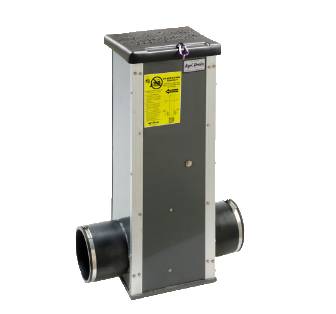Conventional Drainage is the most common form of subsurface watertable management used in the Midwest. It involves a system of plastic drainage pipes that outlet into a ditch or stream in an effort to lower the watertable level to equal the drain depth. However, the method of using watertable control structures to create controlled drainage is gaining popularity.
With controlled drainage, the traditional drainage pipe system is intercepted by a water control structure, allowing the drainage system outlet to be artificially set at any level between the ground surface and the drains. Gates or stoplogs are added or removed to adjust the watertable level based on the time of year and needed field operations. Raising the outlet after planting helps keep water available for plant use longer than uncontrolled subsurface drainage. This practice can also be used to recharge the watertable between growing seasons. Research conducted in North Carolina indicates that controlled drainage may provide some reduction in nitrate (NO3) losses over conventional drained cropland.

Timewell’s control structures deliver on their promise of ease of use and dependability and are even backed by a 5-year warranty on all of our standard structures. Made with a rugged ½” PVC structure, plastic lockable lid, stainless steel screws, custom anodized aluminum corner extrusions, and 5” & 7” stoplogs, these structures are perfect for tough drainage situations. Even though a sturdy control structure is important, what makes our structures stand out is their flexible couplers that allow an effortless connection to varying pipe materials like PVC, plastic, etc.
With sub-irrigation, one system provides both the drainage and irrigation requirements for the crop. The watertable level in the field is regulated through the subsurface drainage system using control structures. The subsurface drain spacing for sub-irrigation is usually 30 to 50 percent denser than that used for conventional subsurface drainage. Irrigation occurs under the ground’s surface, thus raising and maintaining the watertable at an appropriate depth in the crop root zone.
To order a watertable control structure, contact your local Timewell sales manager.